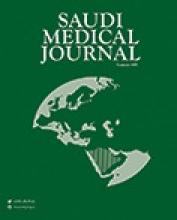Abstract
OBJECTIVES: To evaluate the outcomes of traditional medial-lateral and Dorgan's lateral cross-wiring of supracondylar humerus fractures in children.
METHODS: In our retrospective study, we evaluated 51 children in the Department of Orthopedic Surgery, Harran University Medical Faculty, Sanliurfa, Turkey between February 2005 and January 2009. Group 1 (traditional) included 25 (16 male and 9 female, mean age 6.5 +/- 3.3 years) and group 2 (Dorgan's lateral) included 26 (19 male and 7 female, mean age 7.1 +/- 2.8 years) patients. Functional and cosmetic results were evaluated according to Flynn et al's criteria. Preoperative and postoperative neurologic examination was performed. The mean follow-up periods were 18.4 +/- 1.7 months in group 1 and 16.3 +/- 1.7 months in group 2.
RESULTS: The neurologic, functional, and cosmetic results of 51 patients were reviewed. There were no statistically significant differences found between the groups for gender, age, follow-up periods, fracture types, neurological or function, and cosmetic results. Although postoperative iatrogenic ulnar nerve injuries occurred in 2 (8%) patients treated with the traditional medial-lateral (group 1) cross-wiring technique, no nerve injury occurred in the Dorgan's lateral group (group 2).
CONCLUSIONS: We recommend Dorgan's lateral cross-wiring technique as it is as effective as the traditional medial-lateral cross-wiring technique, and prevents iatrogenic ulnar nerve injuries.
- Copyright: © Saudi Medical Journal
This is an open-access article distributed under the terms of the Creative Commons Attribution-Noncommercial-Share Alike 3.0 Unported, which permits unrestricted use, distribution, and reproduction in any medium, provided the original work is properly cited.






